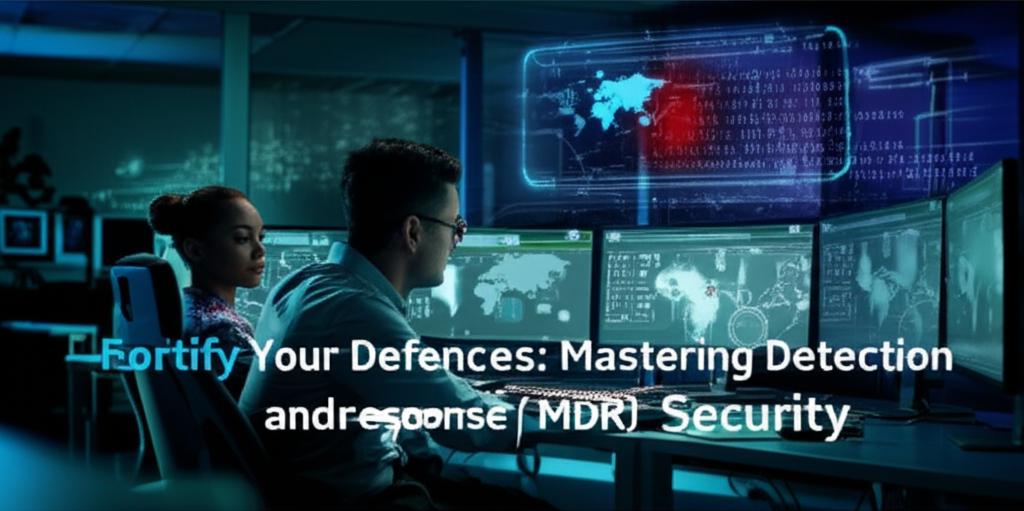Fortify Your Defenses: Mastering Managed Detection and Response (MDR) Security
In today’s rapidly evolving digital landscape, cyber threats are more sophisticated and persistent than ever before. Organizations of all sizes face an uphill battle against ransomware, phishing attacks, zero-day exploits, and insider threats. Traditional security measures, while foundational, often fall short in providing the proactive, around-the-clock vigilance required. This is where Managed Detection and Response (MDR) Security emerges as a critical solution, transforming how businesses approach their cybersecurity posture.
This comprehensive guide will delve deep into what Managed Detection and Response entails, why it’s become indispensable, and how it empowers organizations to not just react to threats, but to anticipate and neutralize them effectively.
What is Managed Detection and Response (MDR) Security?
Managed Detection and Response (MDR) is a comprehensive cybersecurity service that combines cutting-edge technology with human expertise to provide 24/7 monitoring, active threat detection, and rapid incident response. Unlike traditional managed security services (MSSP) that primarily focus on alerting, MDR providers take a proactive stance, actively investigating, containing, and remediating threats on behalf of their clients.
Think of MDR as having a dedicated, elite security operations center (SOC) at your disposal, without the overhead. MDR services go beyond simply notifying you of a potential threat; they act on it, often before it can cause significant damage.
The Evolving Threat Landscape and Why MDR is Crucial
Cyber threats are no longer simple. They are highly organized, stealthy, and designed to evade conventional defenses. Here’s why a robust MDR Security solution is no longer a luxury but a necessity:
- Increased Sophistication: Modern attacks leverage advanced techniques like AI, polymorphic malware, and fileless attacks, making them harder to detect.
- Talent Shortage: There’s a severe global shortage of skilled cybersecurity professionals, leaving many organizations understaffed and vulnerable.
- Alert Fatigue: Security tools generate an overwhelming volume of alerts, many of which are false positives, leading to critical threats being missed.
- Compliance Demands: Regulatory requirements (GDPR, HIPAA, PCI DSS, etc.) mandate robust security practices and incident response capabilities.
- Business Continuity: A single breach can lead to significant financial loss, reputational damage, and operational disruption.
How Managed Detection and Response Works
An effective MDR Security service operates on a continuous cycle of vigilance and action. While specific implementations vary, the core process generally includes:
- Data Collection: MDR providers gather telemetry data from endpoints (EDR), networks, cloud environments, identity systems, and logs using advanced sensors and integrations.
- Threat Detection: Leveraging a combination of advanced analytics, machine learning, behavioral analysis, and threat intelligence, the MDR platform identifies suspicious activities and potential threats.
- Human-Led Analysis: Expert security analysts investigate alerts, correlating data across multiple sources to distinguish genuine threats from false positives, providing invaluable context.
- Rapid Incident Response: Upon confirming a real threat, the MDR team initiates immediate containment actions, such as isolating affected endpoints, blocking malicious IPs, or revoking compromised credentials.
- Threat Eradication & Remediation: Beyond containment, MDR services focus on eradicating the threat, patching vulnerabilities, and providing guidance to strengthen overall security posture.
- Proactive Threat Hunting: Analysts actively search for unknown or hidden threats within the client’s environment, not just waiting for alerts.
Key Benefits of Implementing MDR Security
Adopting a Managed Detection and Response solution offers numerous strategic advantages:
- 24/7/365 Vigilance: Round-the-clock monitoring ensures no threat goes unnoticed, regardless of when it strikes.
- Access to Expert Analysts: Gain immediate access to a team of highly skilled cybersecurity professionals without the hiring and training burden.
- Faster Threat Containment: Significantly reduce the “dwell time” (the period an attacker remains undetected), minimizing potential damage.
- Proactive Threat Hunting: Go beyond automated alerts to actively discover sophisticated, stealthy threats that might otherwise be missed.
- Improved Security Posture: Continuous feedback and remediation advice help fortify your defenses over time.
- Reduced Operational Costs: Eliminate the need for expensive in-house SOC infrastructure and staffing.
- Enhanced Compliance: Meet stringent regulatory requirements with robust logging, monitoring, and incident response capabilities.
MDR vs. Other Security Services
It’s common to confuse MDR with other security offerings. Here’s a brief comparison:
- MDR vs. MSSP (Managed Security Service Provider):
- While MSSPs offer managed security services like firewall management and basic monitoring, MDR focuses specifically on active threat detection, investigation, and response. MSSPs typically alert; MDR acts.
- MDR vs. EDR (Endpoint Detection and Response):
- EDR is a technology that monitors and records endpoint activity. MDR uses EDR technology, combining its data with network, cloud, and identity data, and most importantly, adds the human element of expert analysis and response.
- MDR vs. SOC (Security Operations Center):
- An in-house SOC is a team and facility dedicated to security operations. MDR offers a “SOC-as-a-Service,” providing the capabilities of a full SOC without the capital expenditure and staffing challenges.
Choosing the Right MDR Provider
When evaluating Managed Detection and Response providers, consider the following:
- Coverage: Do they cover endpoints, networks, cloud, and identity?
- Response Capabilities: How quickly do they respond? What actions do they take?
- Threat Intelligence: Do they leverage up-to-date, actionable threat intelligence?
- Expertise: What are the qualifications of their security analysts?
- Reporting & Communication: How transparent are their reports? How do they communicate during incidents?
- Integration: Can they integrate with your existing security tools?
Conclusion: Empowering Your Cybersecurity Strategy with MDR Security
The imperative to protect digital assets has never been greater. Managed Detection and Response (MDR) Security offers a powerful, proactive, and expert-driven approach to defend against the most advanced cyber threats. By offloading the complexities of 24/7 threat detection and response to specialized experts, organizations can significantly enhance their security posture, reduce risk, and focus on their core business objectives. Embracing MDR is not just an investment in technology; it’s an investment in peace of mind and robust resilience against the relentless tide of cybercrime.







